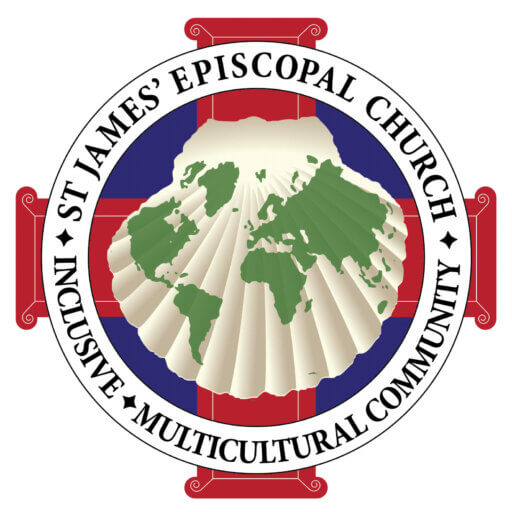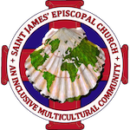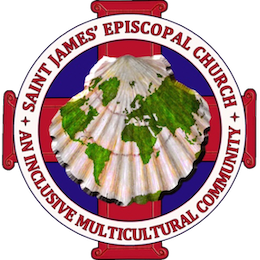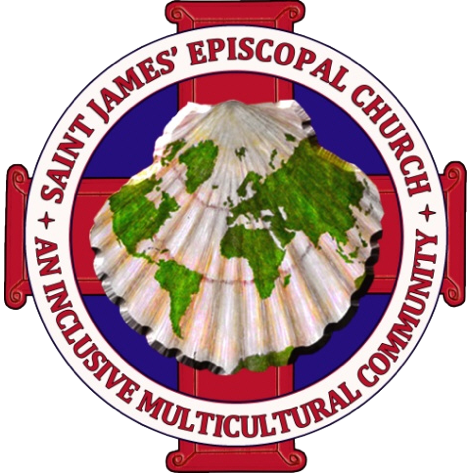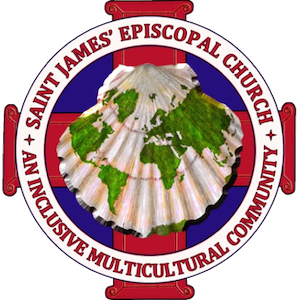Holy Week, March 24-31
Palm Sunday, March 24
8:00 am Rite I Eucharist in person in the sanctuary
10:30 am Rite II Eucharist in the sanctuary (This service will start outdoors with a procession.)
1:00 pm Servicio en español en el santuario
5:00 pm The Late Service in the sanctuary
Maundy Thursday, March 28
7 pm: In person Service with Footwashing, Eucharist, Stripping of the Altar, and procession to the Garden
Good Friday, March 29
7 am, Good Friday Rosary online
12 pm, Good Friday Noon Service, in person
3 pm, Stations of the Cross/Via Crucis with Casa Marianella
8 pm, Good Friday Project, in person
Easter Vigil, March 30
The Great Vigil of Easter will be observed at sundown (8:00 pm). The service starts outdoors with the lighting of the new fire.
Easter Day, March 31
8:00 am. Rite I Eucharist in person, in the sanctuary
10:30 am Rite II Eucharist in person
1:00 pm La Santa Eucaristia en el santuario
5:00 pm The Evening Service, in the sanctuary
Easter egg hunts will follow the 10:30 and 1 pm services.
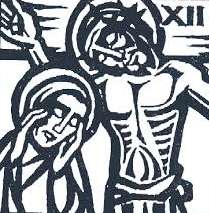
What Is Holy Week?
St. James’ observes Holy Week as the climactic week of the church year, when we remember the passion, crucifixion, and resurrection of Christ. Holy Week has a solid theological basis in Scripture, in the traditions of the people of God, and in our lived reality faith.
Dietrich Bonhoeffer, a German theologian who was executed by the Nazis, wrote The Cost of Discipleship and warned of “cheap grace” that did not take seriously either the gravity of sin or the radical call to servanthood: “When Jesus bids a man come, he bids him come and die.” It is this dimension that is well served by Holy Week observances, as they call us to move behind the joyful celebrations of Palm Sunday and Easter to reflect on both the joy of the resurrection, and focus on the suffering, humiliation, betrayal, and death that is part of our lived reality and the story of Holy Week.
It is important to place the hope of the Resurrection, the promise of newness and life, against the background of death and endings. It is only in walking through the shadows and darkness of Holy Week and Good Friday, only in realizing the horror and magnitude of the dying Jesus on the cross, only in contemplating the ending and despair that the disciples felt on Holy Saturday, that we can truly understand the light and hope of Sunday morning!
In observing this truth, that new beginnings come from endings, many people are able to draw a parable of their own lives and faith journey from the observances of Holy Week. In providing people with the opportunity to experience this truth in liturgy and symbol, the services become a moving proclamation of the transformative power of the Gospel and God at work in the lives of people.
Palm Sunday, or Passion Sunday
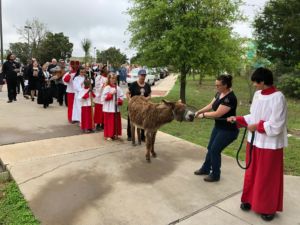 Holy Week begins with Palm Sunday. This Sunday observes the triumphal entry of Jesus into Jerusalem, with the crowds who were in Jerusalem for Passover waving palm branches and proclaiming him as the messianic king. The gospels tell us that Jesus rode into the city on a donkey, and, in so doing, emphasized the humility that was to characterize the Kingdom he proclaimed. The irony of his acceptance as the new King by the crowds who would only five days later cry for his execution should be a sobering reminder of the human tendency to want God on our own terms. We participate in the entry of Jesus into Jerusalem by the waving of palm branches and singing songs of celebration as we process into the church behind our faithful donkey, Toy. Toy will be a part of the Children’s Service this year.
Holy Week begins with Palm Sunday. This Sunday observes the triumphal entry of Jesus into Jerusalem, with the crowds who were in Jerusalem for Passover waving palm branches and proclaiming him as the messianic king. The gospels tell us that Jesus rode into the city on a donkey, and, in so doing, emphasized the humility that was to characterize the Kingdom he proclaimed. The irony of his acceptance as the new King by the crowds who would only five days later cry for his execution should be a sobering reminder of the human tendency to want God on our own terms. We participate in the entry of Jesus into Jerusalem by the waving of palm branches and singing songs of celebration as we process into the church behind our faithful donkey, Toy. Toy will be a part of the Children’s Service this year.
This Sunday is also known as Passion Sunday to commemorate the beginning of Holy Week and Jesus’ final agonizing journey to the cross. The English word passion comes from a Latin word that means “to suffer,” the same word from which we derive the English word patient. In church we read the Passion Narrative, which is the biblical story of Jesus being brought before the authorities and the people, who then call for his death.
Maundy Thursday, or Holy Thursday
During the last few days, Jesus and His disciples had steadily journeyed from Galilee toward Jerusalem. On the sunlit hillsides of Galilee, Jesus was popular, the crowds were friendly and the future was bright. Even his entry into Jerusalem had been marked by a joyous welcome. But in Jerusalem there was a growing darkness as the crowds began to draw back from the man who spoke of commitment and servanthood. There was an ominous tone in the murmuring of the Sadducees and Pharisees who were threatened by the new future Jesus proclaimed.
The term Maundy comes from the Latin word mandatum (from which we get our English word mandate), from a verb that means “to give,” “to entrust,” or “to order.” The term is usually translated “commandment,” from John’s account of this Thursday night. According to the Fourth Gospel, as Jesus and the disciples were eating their final meal together before Jesus’ arrest, he washed the disciples’ feet to illustrate humility and the spirit of servanthood. We follow his example in this service. This eucharistic service also recalls his instruction that we break bread together in remembrance of him. The eucharist is concluded with the stripping of the altar and the beginning of the Watch, as we seek to stay awake and watch with Christ at the altar of repose.
Good Friday
On this day, the church commemorates Jesus’ arrest (since by Jewish customs of counting days from sundown to sundown it was already Friday), his trial, crucifixion and suffering, death, and burial. On this day our service allow worshippers to experience some sense of the pain, humiliation of the journey to the cross.
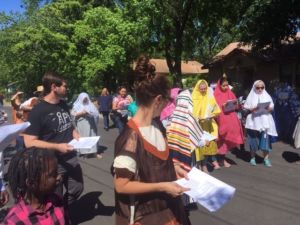 The Stations of the Cross service uses art or drama to represent various scenes from Jesus’ betrayal, arrest, trial, and death, and the worshippers move to the various stations to sing hymns or pray as the story is told. We also offer the Good Friday Project, a collection of artistic performances reflecting on the crucifixion.
The Stations of the Cross service uses art or drama to represent various scenes from Jesus’ betrayal, arrest, trial, and death, and the worshippers move to the various stations to sing hymns or pray as the story is told. We also offer the Good Friday Project, a collection of artistic performances reflecting on the crucifixion.
Good Friday is not a day of celebration but of mourning, both for the death of Jesus and for the sins of the world that his death represents. Yet, although Friday is a solemn time, it is not without its own joy. For while it is important to place the Resurrection against the darkness of Good Friday, likewise the somberness of Good Friday should always be seen with the hope of Resurrection Sunday.
The Great Vigil of Easter
This service is first celebration of Jesus’ resurrection on Easter, and it is the central liturgy of the church year. Our service includes baptism since in the earliest days of the church, the Easter Vigil was a time for new converts to be baptized into the Christian faith and new life in Christ. We hear the stories of God’s work of creation and redemption. The service begins in darkness and gradually builds to bright lights and ringing bells, as we announce and celebrate the resurrection, followed by the first Eucharist of Easter. This return of light symbolizes the resurrection of Jesus from the grave and the light of salvation and hope God brought into the world through the resurrection, the triumph of the light of God’s grace and salvation over the darkness of death and sin.
Easter Sunday
Easter is a festival celebration of Jesus’ resurrection, the most joyful time of celebration of the church year. Celebrated against the background of the shadows and darkness of Lent and Holy Week, this season truly becomes a living expression of the hope that God has brought into the world through the death and resurrection of Jesus.
We begin with our children flowering the cross, which symbolizes the new life that emerges from the death of Good Friday. We sing, pray, celebrate the Eucharist, and ring bells as we announce the glorious resurrection.
